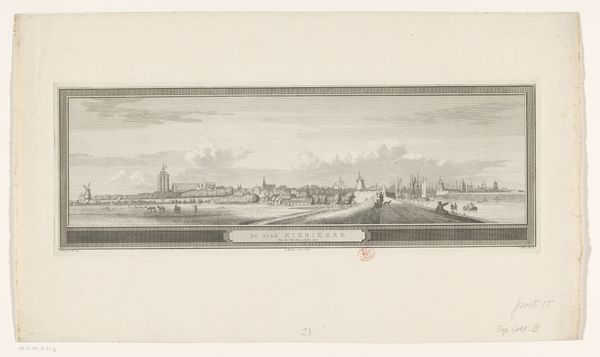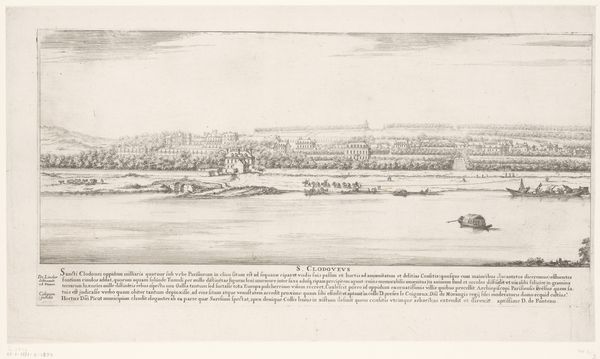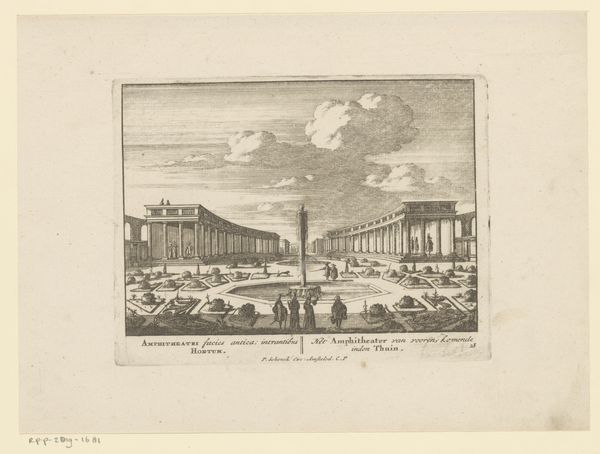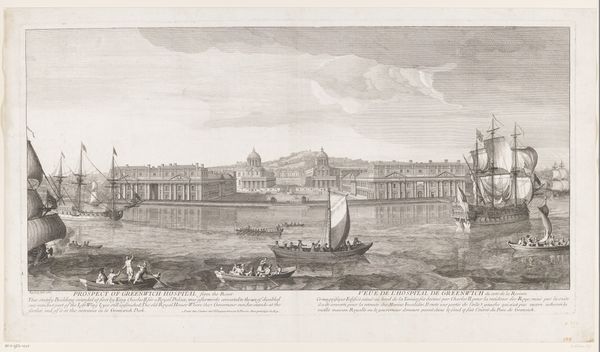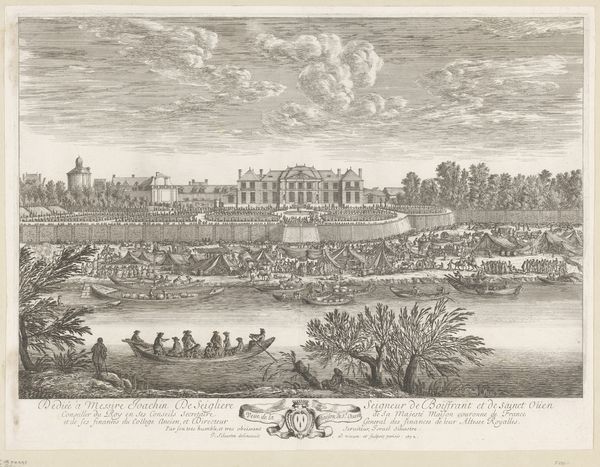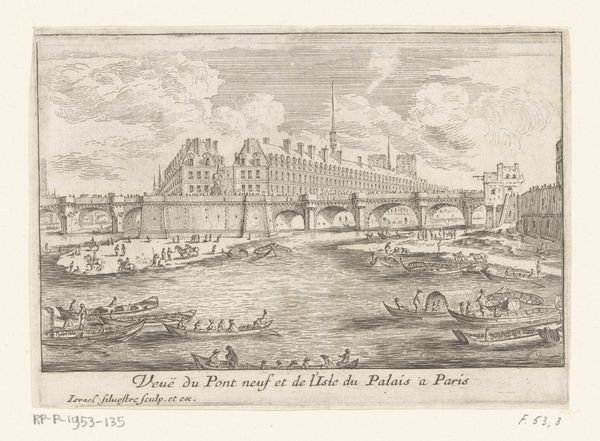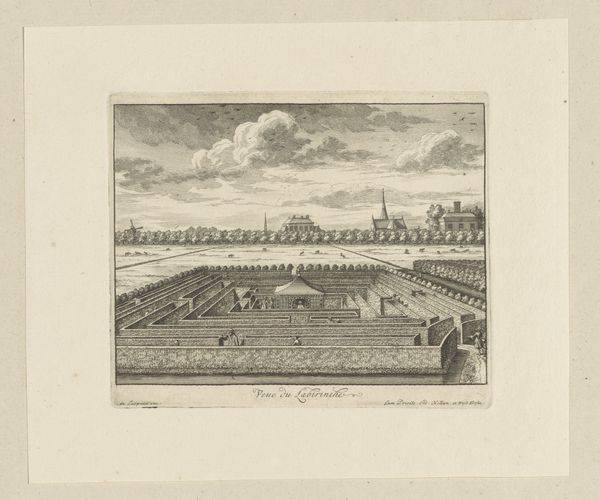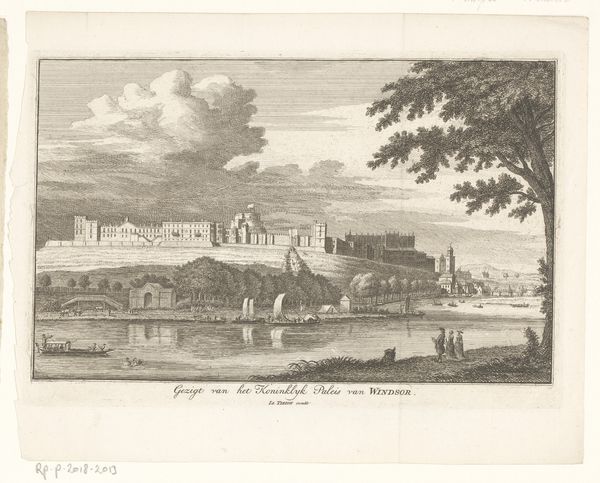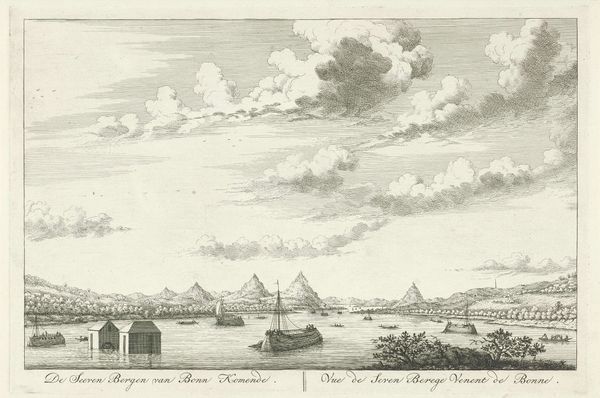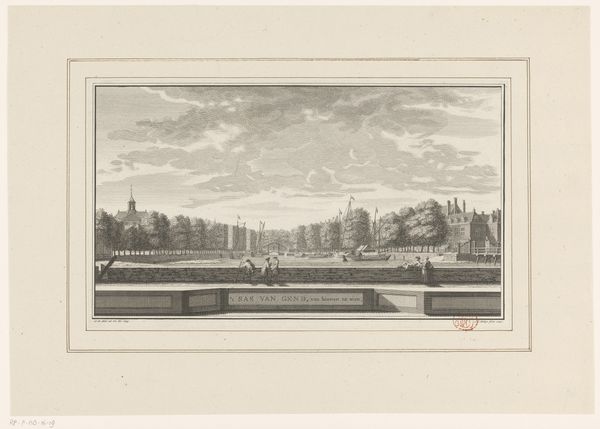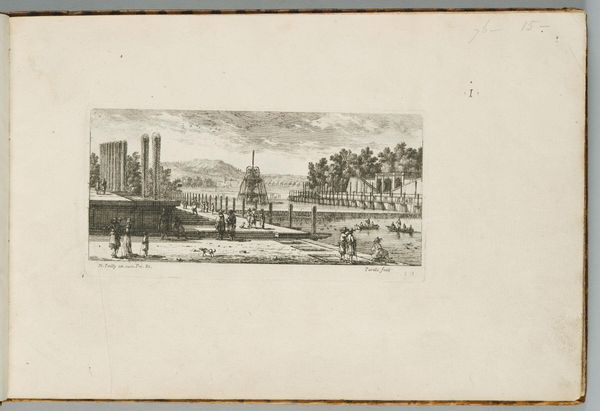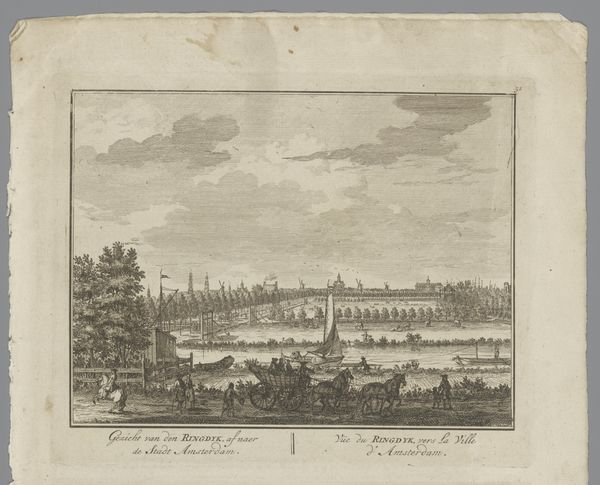
print, etching
#
baroque
# print
#
etching
#
landscape
#
etching
#
cityscape
Dimensions: height 161 mm, width 239 mm
Copyright: Rijks Museum: Open Domain
Editor: We're looking at "View of the Royal Hospital Chelsea, in London," a 1755 etching, by an anonymous artist. It has a wonderfully serene quality despite the architectural focus. What immediately stands out to you about its formal qualities? Curator: Observe how the artist structures the composition using horizontal bands—sky, architecture, river—creating a sense of measured distance and visual layering. Notice, too, the strategic use of light and shadow to delineate form and enhance depth. Do you see how the hatching and cross-hatching contribute to the overall texture? Editor: Yes, I do. It’s a bit repetitive but precise. The light and shadow give the scene definition. The use of hatching gives it a somewhat unfinished quality though, almost like a study. How does this relate to other cityscapes of the time? Curator: Indeed, but does the “unfinished” quality take away from the visual structure or enhance it? Also consider the geometric regularity versus the asymmetry implied in nature. The printmakers carefully constructed their views according to these binaries. Consider the strategic placement of the various forms—the building mass against the cloudscape mass for example, a dialogue about geometric structure set against asymmetry and amorphousness, giving rise to some important questions: What does this pairing denote? Does it give us a perspective on form and formlessness? Editor: I see your point. Perhaps it's about how human creation interacts with the natural world, playing with and highlighting the interplay of both. Thank you for a deeper formal perspective. Curator: Exactly. It demonstrates the artist's understanding of both perspective and form. Hopefully, by carefully decoding these components, we now appreciate not only the surface representation but also its underlying visual framework.
Comments
No comments
Be the first to comment and join the conversation on the ultimate creative platform.
